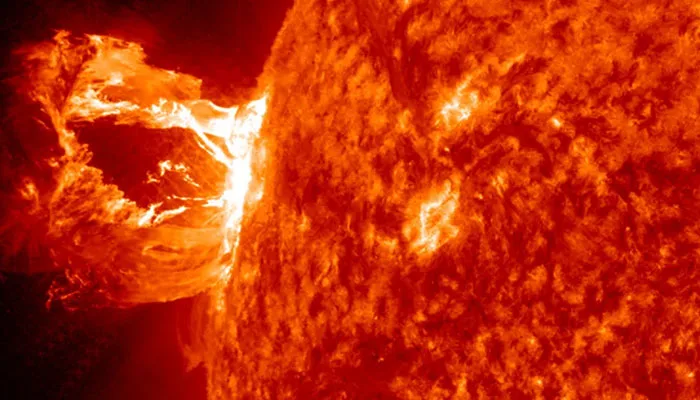In an era characterized by groundbreaking discoveries, a team of international researchers has recently made a remarkable observation: explosions in a nearby galaxy that surpass the power of five million suns. Their study, focused on the Virgo cluster adjacent to our Milky Way galaxy, revealed a vast amount of ejected gas, the magnitude of which is so immense that it would take light a staggering 20,000 years to traverse from one edge to the other.
Leading the study is Dr. Adam Watts, affiliated with the International Center for Radio Astronomy Research (ICRAR) at the University of Western Australia. Dr. Watts explains that these emissions stem from powerful explosions occurring within the central region of the galaxy. These explosions are anticipated to release substantial quantities of hydrogen and heavy elements into the surrounding space. Notably, the volume of gas expelled exceeds the mass of five million suns.
Despite the magnitude of these phenomena, Dr. Watts underscores the limited understanding of the physics and characteristics of these emissions. Their elusive nature renders them exceptionally challenging to detect and study. The gas comprises a rich assortment of heavy elements, including but not limited to oxygen, nitrogen, and sulfur, along with various other chemical constituents.
This groundbreaking observation sheds light on the dynamic and cataclysmic events occurring within galaxies beyond our own. The scale and intensity of these explosions highlight the astonishing forces at play in the cosmos, offering valuable insights into the processes driving galactic evolution. Moreover, the composition of the ejected gas, enriched with heavy elements, provides clues regarding the mechanisms responsible for the production and distribution of these elements throughout the universe.
The implications of this research extend beyond the realm of astrophysics, touching upon fundamental questions about the origins and composition of celestial bodies and the intricate interplay between cosmic phenomena. As scientists delve deeper into the complexities of galactic dynamics, fueled by advancements in observation and analysis techniques, they continue to unravel the mysteries of the universe and expand the frontiers of human knowledge.
In essence, the discovery of these extraordinary explosions serves as a testament to the relentless pursuit of understanding and exploration that defines scientific inquiry. It underscores the awe-inspiring beauty and complexity of the cosmos, inspiring wonder and curiosity among both researchers and the broader community. As humanity peers into the depths of space, each observation brings us closer to unlocking the secrets of the universe and our place within it.



